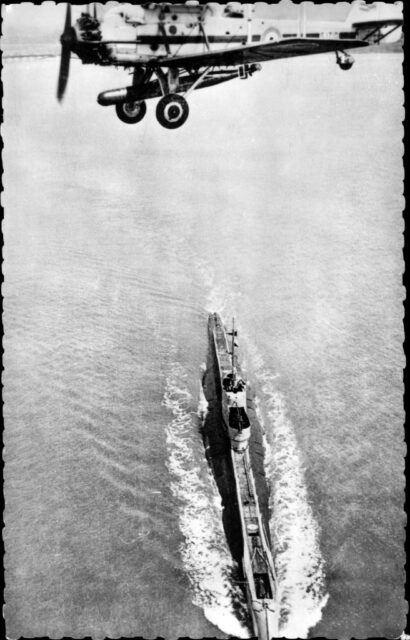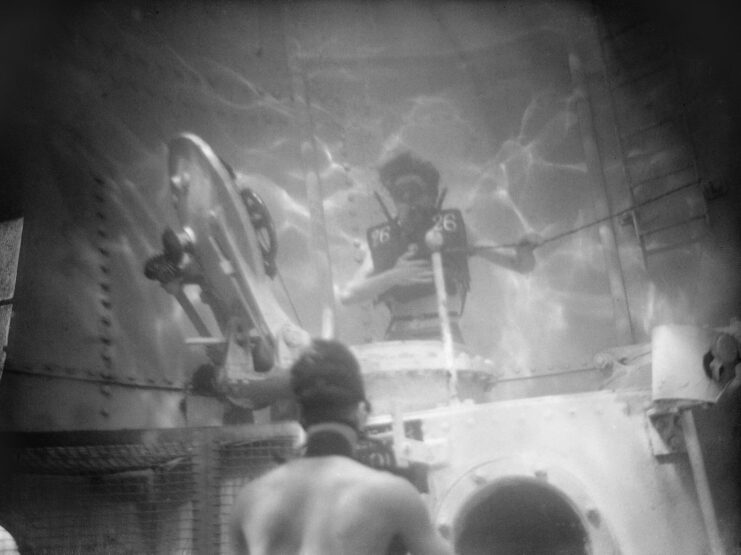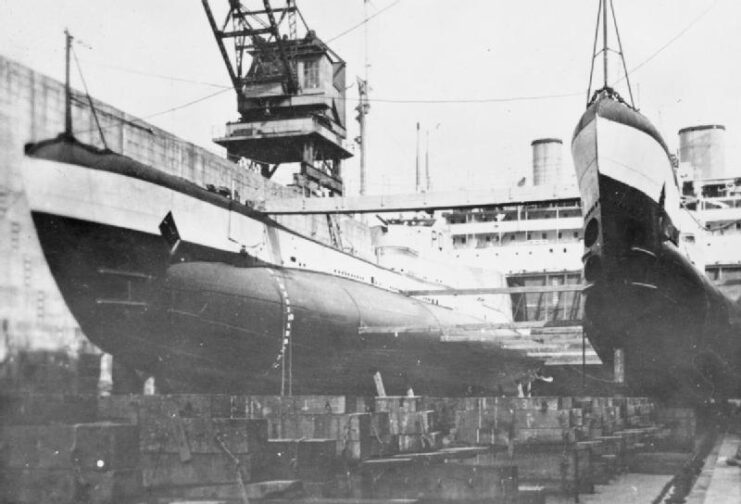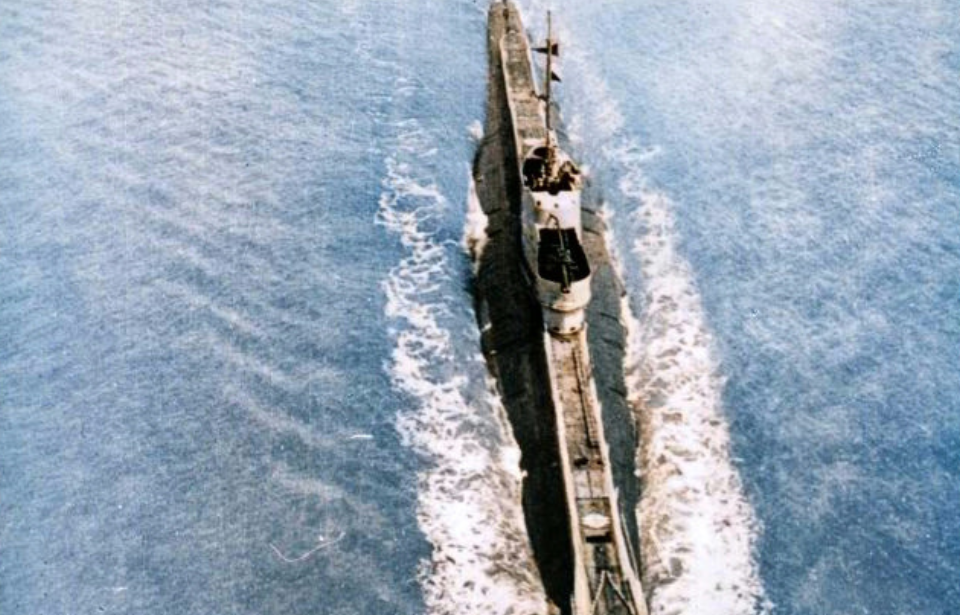In 1931, the British Royal Navy lost a long-range submarine less than two years after it was commissioned. The incident, involving a collision between HMS Poseidon (P99) and a Chinese cargo ship, turned into a tragic but educational episode. Although the event sparked some controversy, it failed to attract widespread public or media attention. What truly caught people’s attention, however, was that China quietly salvaged the wreck years later.
HMS Poseidon (P99) collides with the SS Yuta

On June 9, 1931, HMS Poseidon, a Parthian-class submarine, was engaged in surface exercises off the coast of a leased naval base near Wēihǎi, China. Despite good visibility, the submarine collided with the Chinese merchant vessel SS Yuta, resulting in a large hole in Poseidon‘s starboard hull.
Within moments, Poseidon began to sink, causing her crew to scramble for safety; there was little time for evacuation. Of all of the crew members on board, only 31 sailors were able to escape before the submarine plunged to the ocean floor, more than 100 feet below.
The rescue operation included the aircraft carrier HMS Hermes (95), the heavy cruiser HMS Berwick (65), and Poseidon‘s sister submarine HMS Perseus (N36). Despite these efforts, the incident led to the loss of 21 crew members.
Leading to important policy changes

Eight crew members aboard HMS Poseidon managed to escape using the Davis Submerged Escape Apparatus, an early type of scuba gear. Tragically, not all survived; two of the eight did not reach the surface, and one passed away later.
This incident led the Royal Navy to overhaul its submarine escape protocols. The successful escape of some of Poseidon‘s crew prompted the Admiralty to rethink its procedures. Rather than instructing crews to wait for rescue, the approach shifted towards encouraging immediate escape attempts following a collision. This policy change was announced in the House of Commons in March 1934.
Moreover, the military began equipping submarines with escape chambers and further investigating treatments for decompression sickness.
China launches a secret salvage mission

After the collision, the wreck of HMS Poseidon was left on the ocean floor, lying undisturbed for decades with minimal discussion or interest surrounding it.
In 1972, amid the Cultural Revolution, China launched a covert mission to salvage the Poseidon wreck. The operation, carried out by newly established underwater recovery teams, was highly secretive, and details only came to light many years later.
The mission was a complicated undertaking, presenting numerous logistical and technical obstacles. The exact reasons remain unknown, with theories ranging from China’s desire to test its recovery skills to the aim of removing a navigational hazard.
Keeping the salvage of HMS Poseidon (P99) under wraps

The salvage operation was kept under wraps for decades, and it wasn’t until 2002 that the first hints came out, thanks to an article in the Chinese magazine Modern Ships. This piqued the interest of researchers, leading to further investigations.
The West learned of the mission through Steven Schwankert, an American journalist and diving enthusiast. Schwankert stumbled upon the story during his research and was intrigued by the lack of information out there. His work led him to Hong Kong, where he uncovered the details of the 1972 salvage. He also came across testimony from a man who claimed to have witnessed the vessel being pulled from the ocean.
Schwankert published his six years of research in the book, Poseidon: China’s Secret Salvage of Britain’s Lost Submarine, and the mission was covered in a 2013 documentary, The Poseidon Project.
More from us: The USS Jimmy Carter (SSN-23) is Just One of Three Submarines to Be Named for a Living Person
Are you a fan of all things ships and submarines? If so, subscribe to our Daily Warships newsletter!
These revelations sparked renewed interest in Poseidon and her crew, and the British government sought an explanation from China, leading to several diplomatic discussions.
